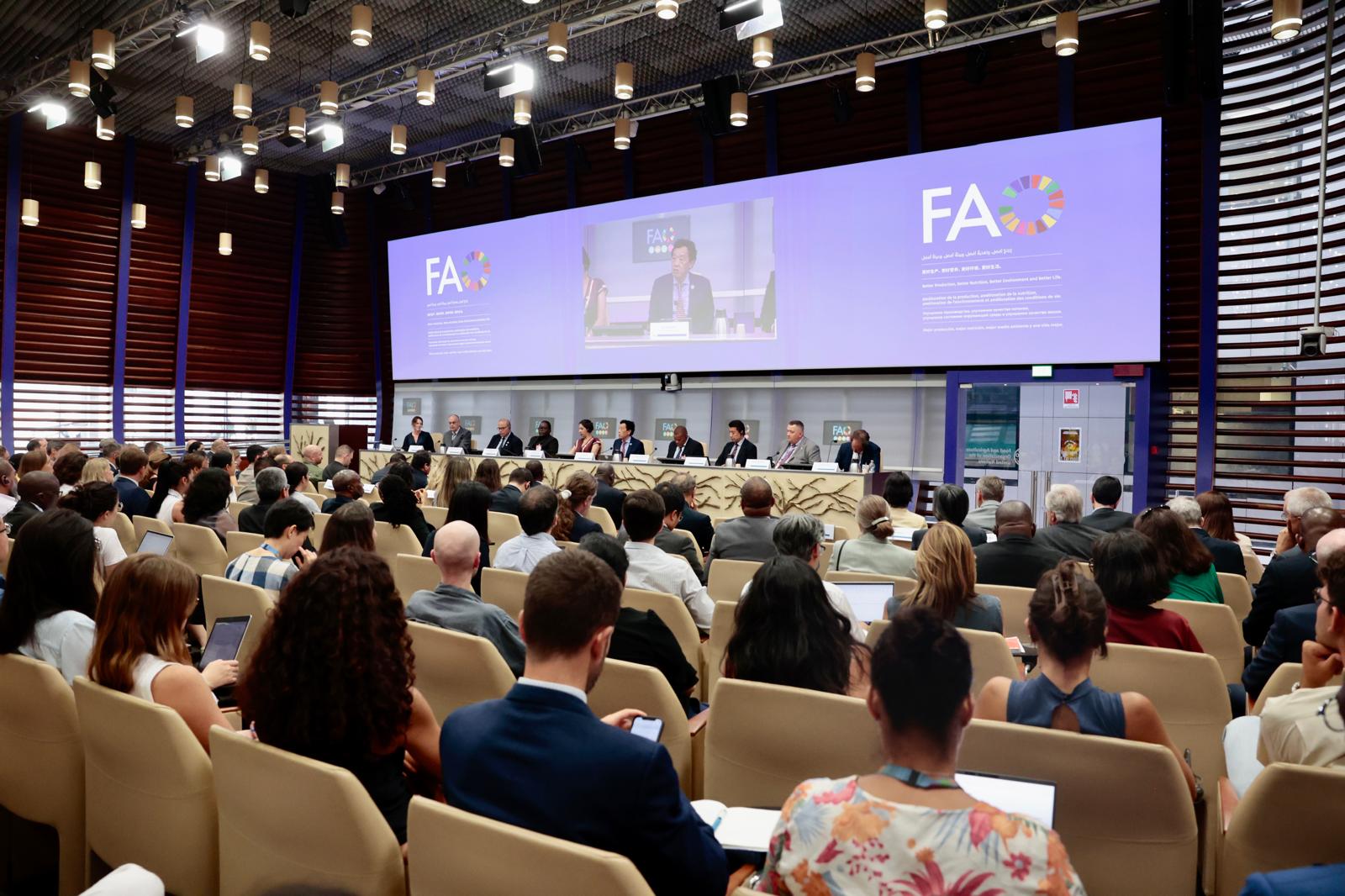FAO launches groundbreaking financing facility to help prevent food crises before they escalate
Director-General QU Dongyu calls for global shift in response to crises: from reaction to anticipation

FAO Director-General QU Dongyu delivers his remarks during Side Event - The Financing for Shock-Driven Food Crisis Facility on the 4th day of the 44th Session of the FAO Conference, FAO Headquarters
©FAO/Pier Paolo Cito
Rome – The Food and Agriculture Organization of the United Nations (FAO) today launched the Financing for Shock-Driven Food Crisis (FSFC) Facility, a mechanism that builds on the existing initiatives to anticipate and prevent escalating food emergencies before they occur. The Facility was unveiled on the sidelines of the 44th Session of the FAO Ministerial Conference.
At the launch event, FAO Director-General QU Dongyu called for a fundamental shift in how the world responds to food crisis—moving from reactive emergency aid to anticipatory action and financing.
“Each year, millions of people are pushed into hunger due to droughts, floods, conflict, and economic shocks,” Qu said noting that the response often comes after crises have spiraled out of control and escalated into full-blown emergencies. “The FSFC is designed to change that paradigm. It offers a new model of anticipatory action, built on a simple but powerful truth: it is more effective—and more cost-efficient—to act before a crisis becomes a catastrophe.”
Evidence from FAO and partners shows that every $1 invested in anticipatory response can yield savings of up to $7, while delivering better outcomes for people at risk. We also know that $1 will scale to $10 of coverage if we bring the reinsurance system onboard.
Developed under Italy’s 2024 G7 Presidency, with the technical contribution of the World Food Programme (WFP) and the UN Office for the Coordination of Humanitarian Affairs (OCHA), the FSFC represents a transformative step forward in crisis response. Built on real-time data, predictive analytics, and science-based triggers, the Facility enables earlier, faster and more targeted interventions.
A unique crisis response mechanism
The Facility is the first of its kind to bring together the following key elements:
- Anticipatory action and rapid-response financing, allowing faster and more cost-effective action;
- Blended and innovative financing from public and private sources, including reinsurance markets;
- Cutting-edge analytics to address up to 12 types of hazards, including droughts, floods, locust outbreak, tropical cyclone, price shocks, and conflict;
- FAO’s first integrated Risk Monitoring and Situation Room at FAO headquarters delivering real-time monitoring to coordinate early detection, warning, and response.
Breaking the cycle of predictable suffering
“This is not just about speed—it’s about changing the logic of how we finance crises,” the Director-General said. “The FSFC enables us to act before disaster strikes, saving lives and preserving livelihoods.”
The need for such a shift is urgent. According to the 2025 Global Report on Food Crises, more than 295 million people across 53 countries and territories faced high levels of food insecurity in 2024—an increase of 13.7 million from the previous year. While conflict remains the leading driver—impacting nearly 70 percent of the most food-insecure—many of these crises were at least partially predictable.
“The FSFC was built to act on this knowledge—to break the cycle of late response and prevent predictable suffering,” Qu said.
The Facility aims to raise an initial $100 million, half of which will fund immediate insurable risk response, while the other half is earmarked for non-insurable risk transfer solutions. This innovative structure could unlock benefits worth nearly $1 billion, with benefit-cost ratios as high as 10 to 1.
A strategic partnership for global resilience
In closing, the Director-General emphasized that the FSFC reflects a shared commitment to act earlier, faster, and more strategically to protect the most vulnerable.
FAO is actively working with global and regional partners to operationalize and expand the Facility. Designed to complement existing mechanisms like OCHA’s Central Emergency Response Fund (CERF), the FSFC fills critical gaps in geographic reach and hazard coverage.
Contact
Irina Utkina FAO News and Media (Rome) +39657052542 [email protected]
FAO News and Media (+39) 06 570 53625 [email protected]
